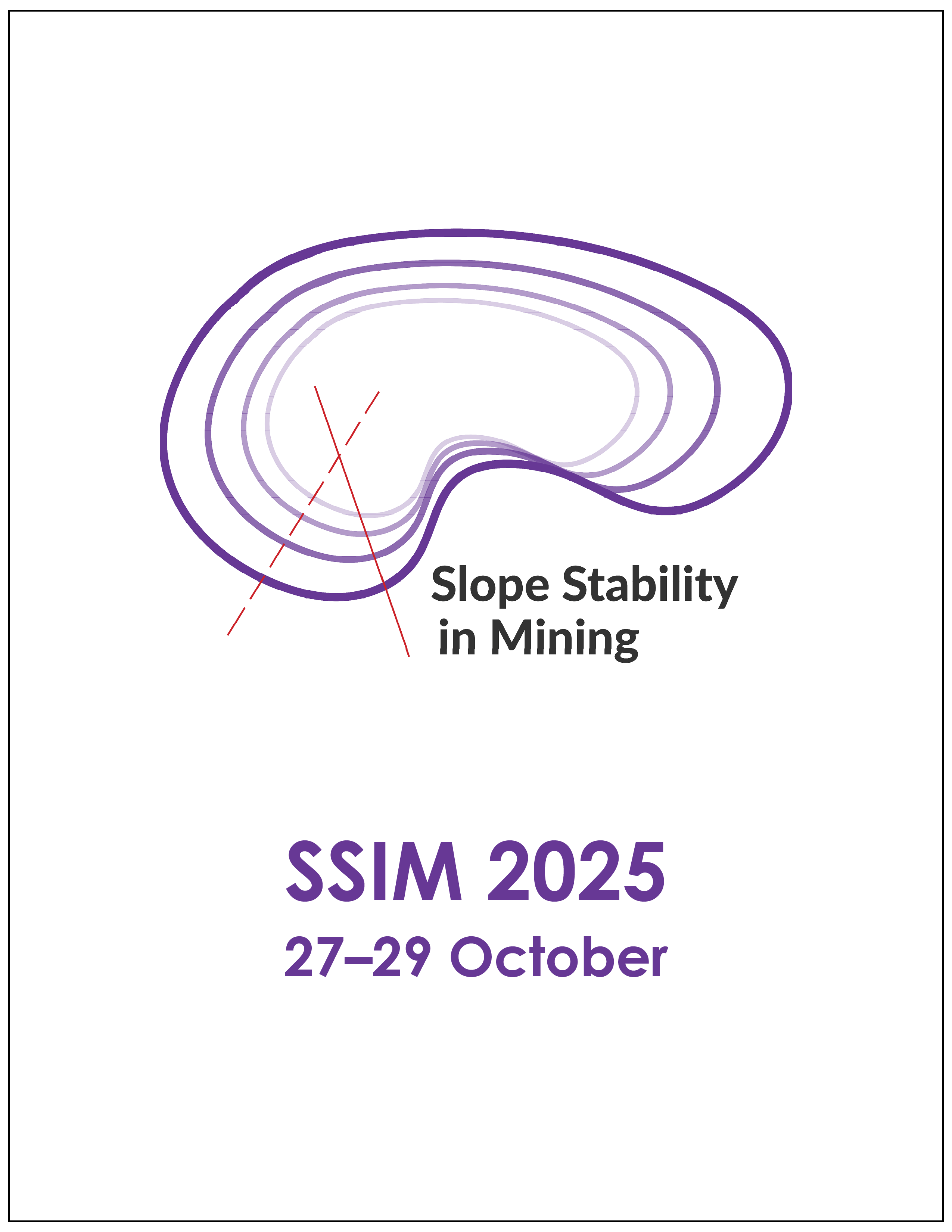On double-wedge and bi-planar failure mechanisms in waste rock dumps and heap leach facilities

|
Authors: Arrieta, M; Bar, N |
DOI https://doi.org/10.36487/ACG_repo/2535_23
Cite As:
Arrieta, M & Bar, N 2025, 'On double-wedge and bi-planar failure mechanisms in waste rock dumps and heap leach facilities', in JJ Potter & J Wesseloo (eds), SSIM 2025: Fourth International Slope Stability in Mining Conference, Australian Centre for Geomechanics, Perth, https://doi.org/10.36487/ACG_repo/2535_23
Abstract:
Double-wedge and other complex failure mechanisms in high-end waste dumps and heap-leach facilities remain under-recognised hazards, particularly where dumps reach great heights on sloping foundations. Numerous catastrophic incidents over the past three decades confirm that these events involve an “active” wedge driving a “passive” wedge that has not yet fully mobilised, permitting large, non-brittle deformations. A double-wedge failure is comprised of two kinematically linked wedges bounded by intersecting shear planes, with the upper block progressively mobilising the lower block. Conventional limit-equilibrium assessments can underestimate the associated risk by assigning a single Factor of Safety that masks this active–passive contrast. This paper tests the hypothesis that double-wedge (active–passive block) and bi-planar failures can be reliably distinguished, and their risks semi-quantified by staged finite-element (FE) and finite-difference (FD) backanalysis. The objectives are to: (1) formalise diagnostic criteria that capture partial versus uniform shear-mobilisation, (2) evaluate the criteria through two documented case studies, and (3) translate the findings into practical mitigation strategies. High-resolution crack mapping and drone-based displacement monitoring reveal wedge propagation toward the crest, while FE/FD models reproduce these movements and quantify the safety-factor. The case studies show that dumps exceeding about 200 m typically initiate doublewedge failure at roughly two-thirds of their height, and that steeper basal beds in heap leach facilities accelerate dual failure-plane formation. Objective 2 is therefore confirmed; double-wedge interaction frequently governs large-scale instability. Systematic instrumentation and targeted inspections, linked to performance-based key performance indicators, enable early detection and warning of the partial mobilisation signature. Objective 3 translates these insights into an integrated mitigation strategy that combines selective placement of weaker material, incremental geometry refinements and disciplined construction-and-monitoring routines, demonstrably lowering collapse potential in challenging geotechnical settings.
Keywords: double-wedge, bi-planar, high-end waste dumps, heap leach, stability analysis
References:
Bar, N, Arrieta, M, Espino, A, Diaz, C, Mosquea, LA, Mojica, B, McQuillan, A, Baldeon, G 2022, ‘Back-analysis of ductile slope failure mechanisms and validation with aerial photogrammetry, InSAR and GbRAR to proactively manage economic risks to protect the mine plan’, in R Hammah, T Yacoub, A McQuillan, J Curran (eds) The Evolution of Geotech – 25 Years of Innovation,
CRC Press, London, pp. 512–526.
Bar, N, Semi, J, Koek, M, Owusu-Bempah, G, Day, A, Nicoll, S & Bu, J 2020, ‘Practical waste rock dump and stockpile management in high rainfall and seismic regions of Papua New Guinea’, in PM Dight (ed.), Slope Stability 2020: Proceedings of the 2020 International Symposium on Slope Stability in Open Pit Mining and Civil Engineering, Australian Centre for Geomechanics, Perth, pp. 117–128,
Bar, N, Yacoub, TE & McQuillan, A 2019, ‘Analysis of a large open pit mine in Western Australia using finite element and limit equilibrium methods’, Proceedings of the 53rd US Rock Mechanics/Geomechanics Symposium, Curran Associates, New York.
Dunbavan, M 1980, ‘Physical Modelling of Sequential Slope Failure’, Proceedings of the 3rd ANZ Conference on Geomechanics, Institution of Professional Engineers New Zealand, Wellington, pp. 42–45.
Hawley, M & Cunning, J (eds) 2017, Guidelines for Mine Waste Dump and Stockpile Design, CSIRO, Clayton.
McQuillan, A, Yacoub, T, Bar, N, Coli, N, Leoni, L, Rea, S & Bu, J 2020, ‘Three-dimensional slope stability modelling and its interoperability with interferometric radar data to improve geotechnical design’, in PM Dight (ed.), Slope Stability 2020: Proceedings of the 2020 International Symposium on Slope Stability in Open Pit Mining and Civil Engineering, Australian Centre for Geomechanics, Perth, pp. 1349–1358,
Moffit, K 2000, Mine waste dump instability, Master thesis, The University of British Columbia, Vancouver.
Richards, BG, Coulthard, MA & Toh, CT 1981, Analysis of slope stability at Goonyella Mine, Canadian Geotechnical Journal,
© Copyright 2025, Australian Centre for Geomechanics (ACG), The University of Western Australia. All rights reserved.
View copyright/legal information
Please direct any queries or error reports to repository-acg@uwa.edu.au
View copyright/legal information
Please direct any queries or error reports to repository-acg@uwa.edu.au

